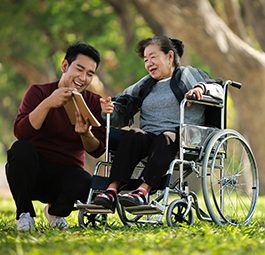News
AAFA’s 2022 Allergy Capitals™ Report Identifies the Most Challenging Cities for Spring and Fall Allergies
Scranton, Pennsylvania ranked most challenging city in the U.S. for pollen allergies for the second year in a row
 Washington, D.C., March 2, 2022 –Today, the Asthma and Allergy Foundation of America (AAFA) released its annual Allergy CapitalsTM report for 2022. The report identifies the most challenging cities for spring and fall allergies in the top 100 metropolitan areas in the continental United States. Cities are ranked based on spring and fall pollen scores, over-the- counter medicine use, and availability of board-certified allergists/immunologists.
Washington, D.C., March 2, 2022 –Today, the Asthma and Allergy Foundation of America (AAFA) released its annual Allergy CapitalsTM report for 2022. The report identifies the most challenging cities for spring and fall allergies in the top 100 metropolitan areas in the continental United States. Cities are ranked based on spring and fall pollen scores, over-the- counter medicine use, and availability of board-certified allergists/immunologists.
For the second year in a row, Scranton, Pennsylvania, takes the top spot based on its high spring and fall pollen scores and lower-than-average number of allergy/immunology specialists per patient.
The top 20 Allergy CapitalsTM for 2022 are:
1. Scranton, PA
2. Wichita, KS
3. McAllen, TX
4. Richmond, VA
5. San Antonio, TX
6. Oklahoma City, OK
7. Hartford, CT
8. Buffalo, NY
9. New Haven, CT
10. Albany, NY
11. Bridgeport, CT
12. Springfield, MA
13. Dayton, OH
14. Columbia, SC
15. El Paso, TX
16. Syracuse, NY
17. Des Moines, IA
18. Miami, FL
19. Memphis, TN
20. Las Vegas, NV
See the full 100-city ranking at allergycapitals.com. The report lists overall annual rankings and seasonal comparison for spring and fall.
AAFA began identifying annual Allergy CapitalsTM in 2003. Since that first report, seasonal allergies have worsened. Climate change has caused the growing seasons to get longer and warmer, leading to higher pollen counts in both spring and fall. The warmer temperatures also get trapped in urban areas, which impacts air pollution. Urban areas are also often designed to have wind-pollinating trees instead of fruiting (or insect-pollinating) trees.
“Climate change is a public health emergency. More than 24 million people in the U.S. have seasonal allergic rhinitis which is most often caused by pollen allergies,” says Kenneth Mendez, CEO and president of AAFA. “If we don’t slow down the warming temperatures, pollen production will only intensify. This means symptoms could worsen as climate change continues to evolve.”
Allergies can also trigger asthma episodes or attacks. Around 60-80% of the 25 million people in the U.S. with asthma have allergic asthma. “We see spikes in emergency room visits that coincide with spikes in pollen seasons,” continues Mendez. “Around 3,600 people per year die from asthma, so it is important to address and manage asthma and allergy triggers where you live.”
Black, Hispanic, and Indigenous populations bear the disproportionate burden of air pollution, asthma, allergies, and climate change. This is the result of long history of housing policies in the U.S. that discriminate against these groups. These policies have pushed people of color to live in undesirable neighborhoods with greater environmental and social risks. As a result of systemic racism in U.S. policies, governance, and culture, racial and ethnic minority populations are more vulnerable to the health impacts of climate change.
“AAFA’s Allergy CapitalsTM report helps raise awareness of the impact of pollen and climate change on individual and community health,” says Melanie Carver, chief mission officer of AAFA. “While there are steps individuals can take to manage their allergies, we need communities to improve their city planning and take action on health disparities impacting higher risk populations.”
For people who are impacted by pollen allergies, there are options available to prevent or treat allergy symptoms.
“Schedule an appointment with your allergist to work on a treatment plan together after reviewing your symptoms and considering allergy testing. These measures will help identify specific therapies to help reduce allergy symptoms and to improve your quality of life,” says Dr. John James, medical specialist and spokesperson for AAFA. “There are many options available, including environmental controls and medical treatments, to treat pollen allergies.”
For tips on how to manage your pollen allergies, go to aafa.org/pollen-allergy.
Kimberly Rafferty
Asthma and Allergy Foundation of America (AAFA)
gro.afaa@aidem
Founded in 1953, AAFA is the oldest and largest non-profit patient organization dedicated to saving lives and reducing the burden of disease for people with asthma, allergies and related conditions through research, education, advocacy and support. AAFA offers extensive support for individuals and families affected by asthma and allergic diseases, such as food allergies and atopic dermatitis (eczema). Through its online patient support communities, network of local chapters and affiliated support groups, AAFA empowers patients and their families by providing practical, evidence-based information and community programs and services. AAFA is the only asthma and allergy patient advocacy group that is certified to meet the standards of excellence set by the National Health Council. For more information, visit: www.aafa.org








